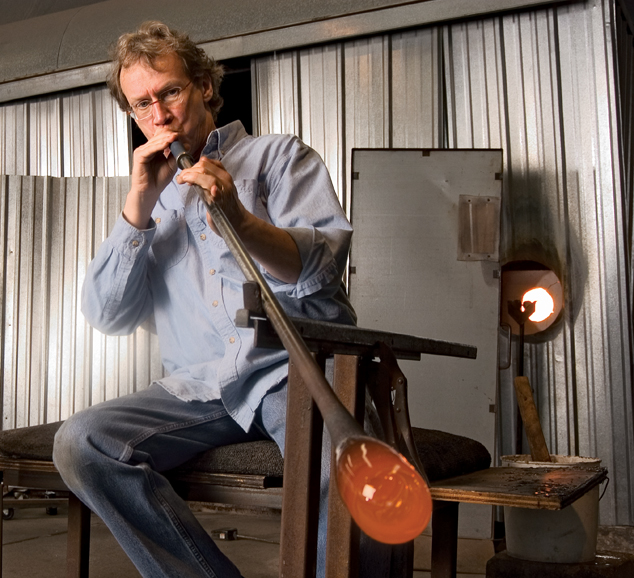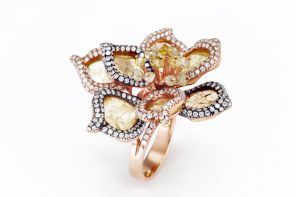If you’re a fan of antiquing, galleries, independent bookstores, coffeehouses and gift and tea shops, than you would enjoy a day in Millerton in Dutchess County.
On the village’s Main Street, you’ll find Charlotte Taylor, with home accessories, gifts and items for the nursery; Gilded Moon Framing & Gallery; Harney & Sons Tea Shop and Tasting Room; Irving Farm Coffee Roasters; and Oblong Books & Music, just to name a few.
“It’s atypical for a small village in New York,” Jan Gilmor says. “There are a number of second homeowners here and the level of sophistication makes for an interesting mix.”
Jan ought to know. She and her husband John are the creative owners of Gilmor Glassworks, which anchors Main Street across the street from Harney & Sons.
It’s a metaphoric anchor as well, offering arts lovers a wealth of handblown glass — tumblers, stemware, bowls and ornaments that straddle the traditional and the contemporary in such jewel colors as blush, cobalt, emerald, ice blue, lavender, quince (yellow-green) and red — along with jewelry and fashion. (Both Annie Walwyn-Jones and Jane Wilson-Marquis, whose clothing designs appeared in September WAG, have been featured in Gilmor Glassworks.)
It’s not just a place to shop but one where the public can watch glass being made on production days (although there’s no set viewing schedule for the public.)
Jan is the designer and John the glass blower, assisted by part-time gaffers Anthony Bianco and Joe Webster.
“There’s a lot to running a business that has nothing to do with making the product you’re selling,” she says. “John’s on the phone troubleshooting with vendors or caring for the equipment. We rely on Anthony and Joe to get production done.”
Glassblowing is no easy art. The Gilmors make not only clear, but colored glass — in contrast to those glassmakers who make only clear and then rely on buying colored glass. The Gilmors also use 23-karat gold on clear glass and quince and tortoise shell on quince. But from now until the end of the year, they are working only with clear, evergreen, lavender, quince and red for the holidays.
The colors are made by mixing sand, fluxes and oxides, which are charged in a furnace at 2300 degrees. The colors cook overnight, with the temperature turned down at the end of the melting period.
But not much. Using a blowpipe, John shapes the glass at 2000 degrees.
“People don’t realize what goes into making glass,” Jan says.
At first, she didn’t either, even though she grew up in an artistic household in New Jersey, with a mother who was a fashion illustrator and a father who was a commercial illustrator. Jan’s art was dance, which she studied at Purchase College. Its conservatory is the equivalent of a professional company with many of its graduates going on to modern dance companies in Manhattan, as in the case of Terese Capucilli, who became one of the finest interpreters of Martha Graham’s choreography. But family issues intervened and Jan became disenchanted with dance.
It was while she was living and working in retail in New York City that her father and stepmother began renovating a house in a Pine Plains crafts community that is now Mashomack Fish & Game Preserve Club. John — who was teaching clay in Ohio on a National Endowment for the Arts grant — was brought in as a glass person and was renovating a studio there. (He holds a Bachelor of Arts degree in clay and sculpture from Denison University and a Master of Fine Arts degree in clay and glass from Southern Illinois University in Carbondale.)
John became friends with Jan’s father and on Father’s Day 1977, the future couple met in Pine Plains. They married that year, opening their studio there a year later.
“I was very fascinated with what he did,” Jan says of John’s glassblowing, “and I had enough chutzpah and confidence in my eye to say let’s do this or let’s try that. I was also very good with color.”
Soon they were creating a piece that was selected for the touring “New Glass” retrospective sponsored by the Corning Museum of Glass and wowing well-established crafts fairs in Rhinebeck and Baltimore. They’ve been in Millerton almost 20 years.
While the Gilmors make ornaments with glass loops, decorative pitchers and vases and sandblasted works that are “very labor-intensive and very expensive,” much of what they do is designed for the everyday.
“A lot of glassmakers don’t make works intended to be used,” Jan says. “We make art intended to be used.”
For more, call 518-789-8000.





